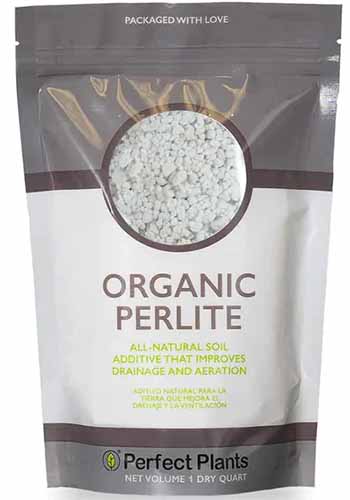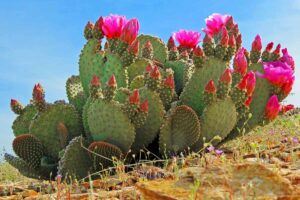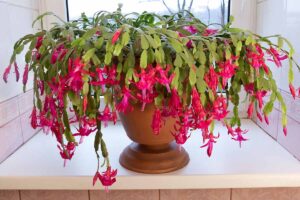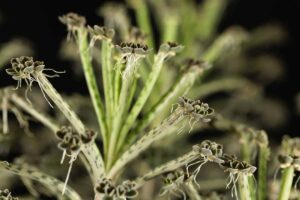Have you ever been captivated by the stunning beauty of cacti plants? Of course you have.
Their unique shapes, vibrant colors, and resilient nature make them fabulous additions to any indoor or outdoor space.
They not only add a touch of natural beauty but also require minimal attention and care from the gardener.
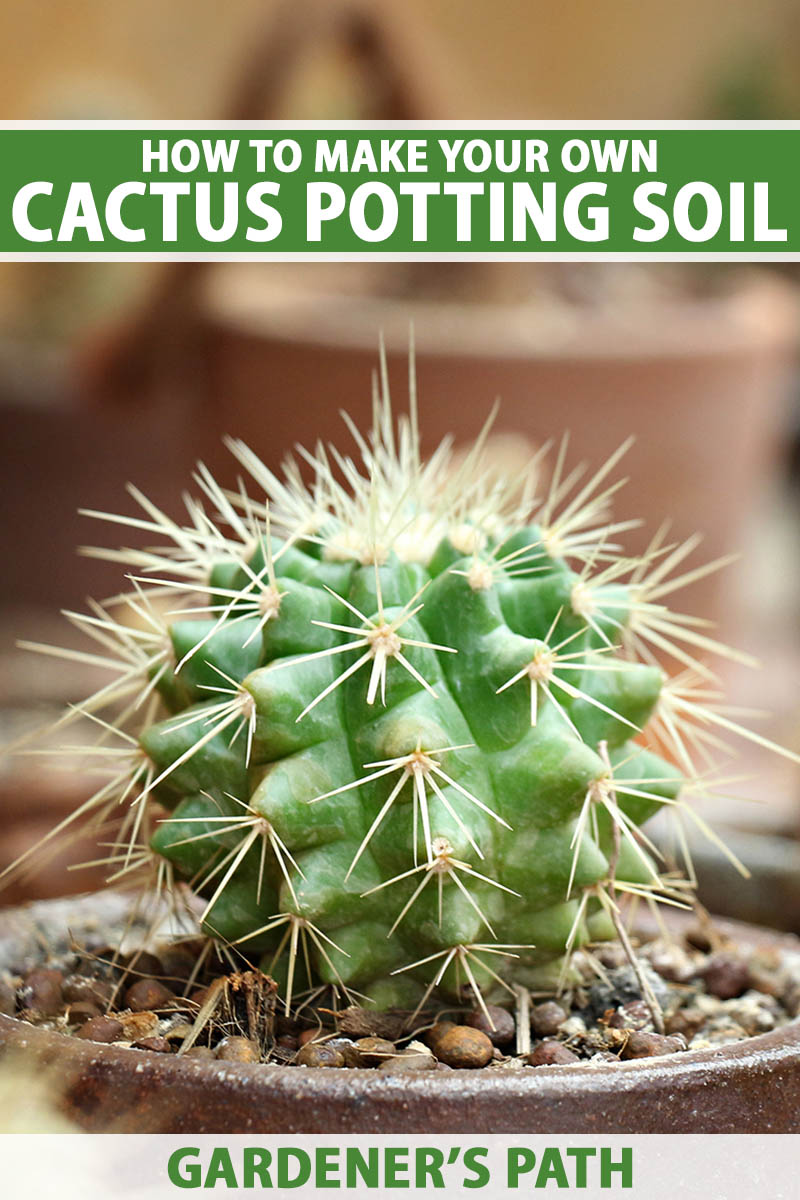
We link to vendors to help you find relevant products. If you buy from one of our links, we may earn a commission.
One of the keys to keeping these darlings healthy and thriving lies in a crucial element: choosing the right cactus potting soil.
You can read more about general cacti and succulent care here. In this article, we will be going over the proper soil that your cactus desires.
Here are the topics we will be discussing:
What You’ll Learn
What Is Cactus Soil?
Cactus potting soil or potting mix is a unique blend of inorganic materials like sand, gravel, pumice, and perlite.
The mixture can also include a touch of organic material like potting soil, pine bark, or peat moss. This perfect recipe is carefully crafted for the success of your beloved prickly friends.

The special mixture is designed to provide excellent drainage and aeration, making it perfect for growing cacti and succulents.
Say goodbye to soggy roots! It’s specifically tailored to meet the needs of these water-wise plants that dislike wet mediums and excess moisture.
By using a specific blend, you can create an ideal environment for your cacti, allowing them to thrive and make a beautiful addition to your indoor space with minimal fuss.
Indoor Cactus Needs
To provide the ideal conditions for these plants to thrive indoors, regular potting soil simply won’t cut it. They require something different to suit their tastes.
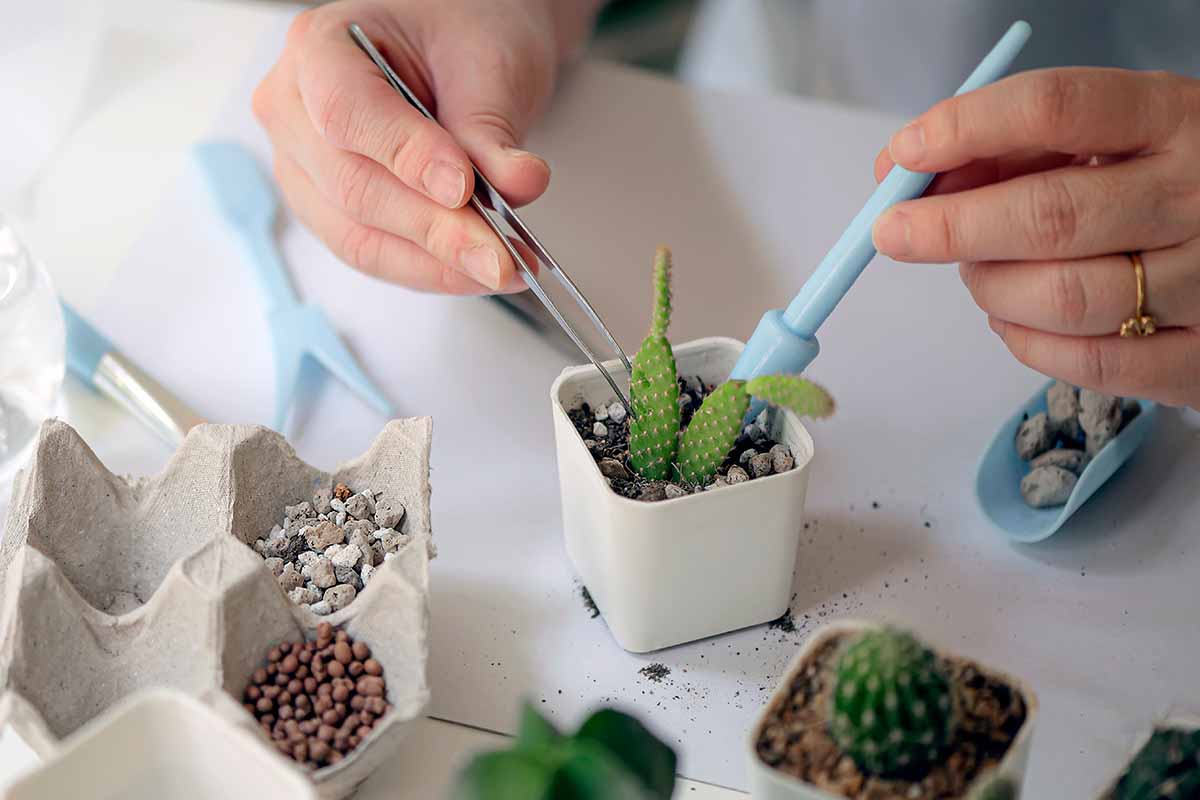
Cacti have shallow, delicate root systems that require a potting medium as unique as they are, with the proper characteristics.
This blend, specifically formulated to mimic their native desert, tropical, or subtropical environment, is the key.
While many of these plants prefer sunny locations with intense heat and minimal rainfall it’s essential to note that some species can also be found in tropical environments, where they may encounter more moderate to high levels of rainfall compared to their desert counterparts.
The soil substrate addresses their needs by being lightweight, well-draining, and low in organic matter to prevent excess moisture retention that can lead to root rot.
By using it, you can create the perfect environment for your plants, allowing them to flourish and thrive in your indoor space.
Can I Use Regular Potting Mix?
This isn’t a regular potting mix and mighty cactus soil face-off, but let’s talk about the differences between the two products.
Regular potting soil may be packed with organic matter like peat moss and compost, and it provides the perfect home for most plants. But cacti are rebels and they don’t play by the same rules.
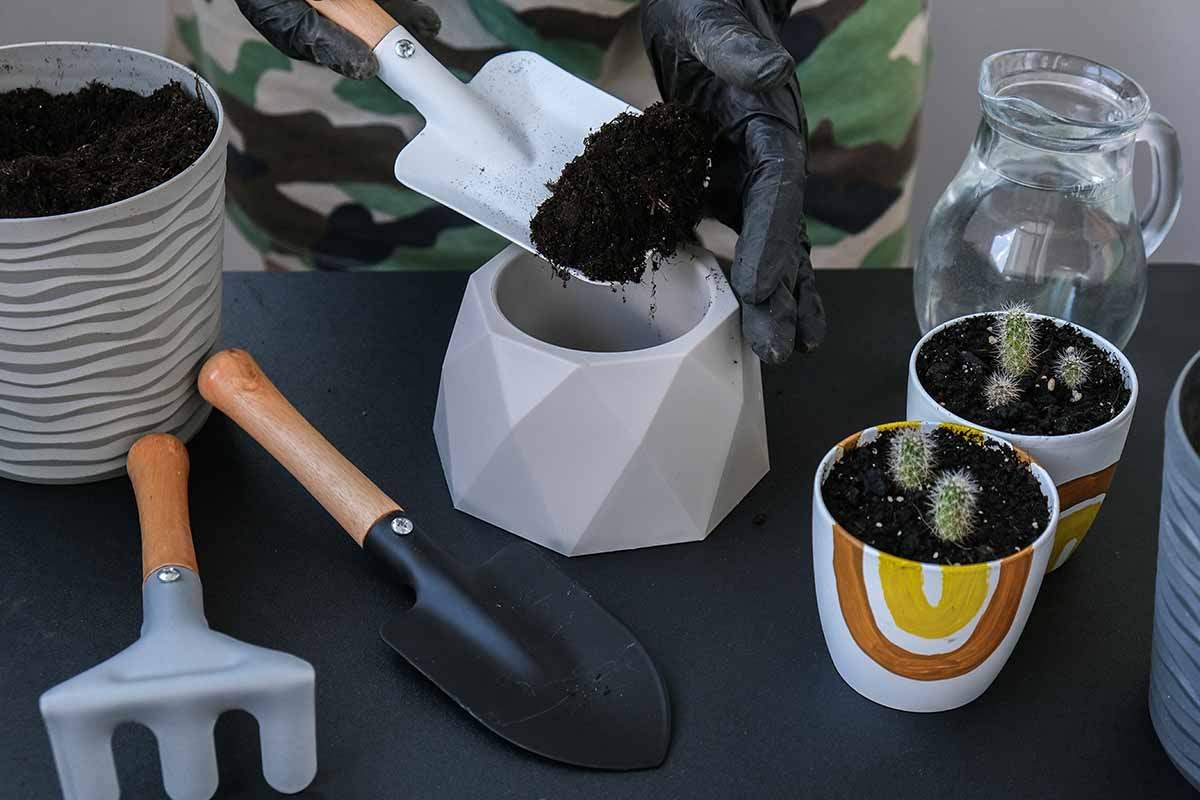
As stated earlier, these plants prefer a mix that’s less rich in organic matter, featuring the likes of perlite, pumice, grit, gravel, and sand. It’s a gritty composition that sets the succulent medium apart.
Regular potting mix, with all its organic goodness, has a knack for retaining moisture. This blend is best suited to keeping plants hydrated. Cacti unfortunately don’t crave these same levels of moisture and prefer a medium that quickly drains.
When it comes to aeration, these plants have delicate roots that need space to breathe. Regular potting mix can be a bit dense, hindering proper air circulation. But a lightweight and airy blend provides the ideal environment for those roots to thrive.
Cacti often endure long dry spells followed by sudden bursts of rain in their native environments. To mimic this natural rhythm, they need soil blends that drain like lightning.

And last but not least, let’s talk about nutrients. Regular potting blends provide a feast for plants, rich with nutrients and often boosted with fertilizers. But guess what? Cacti like it a bit more rugged.
These plants prefer a nutrient-poor environment, thriving in the wild with minimal fuss. The best potting blend provides just what they need.
So there you have it, the tale of two soils. With its unique composition, impeccable drainage, and perfect balance of aeration, the right potting mix sets the stage for cacti to shine, embracing their desert spirit.
DIY Ingredients
To make a simple, effective blend you only need three ingredients. Keep in mind, if one of the ingredients is unavailable, you have the flexibility to substitute it with an alternate option.
Here’s a basic recipe:
- Three parts potting soil
- Three parts coarse sand
- Two parts perlite
1. Potting Soil
The first ingredient is the versatile all-purpose potting blend, like this one from Espoma that’s available via Amazon.

Look for a light and fluffy variety, steering clear of brands that put emphasis on their ability to retain moisture.
2. Coarse Sand
This next ingredient is coarse sand.
This important ingredient ensures good drainage, preventing waterlogging and keeping those roots healthy.
Be sure to choose coarse sand specifically for gardening, avoiding beach sand or fine horticultural sand. If needed, you can consider using a substitute like poultry grit.
Poultry grit is composed of crushed rocks and minerals that are specially formulated to aid digestion in poultry. When used in soil mixes, this product provides a similar function as coarse sand by improving drainage and preventing compaction.

You can find a five pound bag of poultry grit from Manna Pro via Amazon.
Poultry grit also offers the advantage of being lightweight, making it an ideal component for potting mixes that can be easily moved or lifted.
3. Perlite
The last ingredient, perlite, is a white, lightweight, granular material that brings much-needed aeration.
Perfect Plants sells organic perlite in one-, four-, or eight-quart options.
It helps to prevent root rot and keeps the roots happy. If perlite is not available, you can use horticultural pumice as an alternative.
Much like perlite, pumice is lightweight and porous, contributing to improved soil structure, root aeration, and water drainage.
Unlike perlite, pumice can retain some moisture, striking a balance between drainage and moisture retention.
Bonus: Pine Bark
As a little extra tip, pine bark can be a wonderful addition to your mix. It decomposes slowly, providing even more drainage and maintaining a loose texture.
Amazon sells pine bark nuggets as a two-quart bagged option.

You can experiment with different sizes of pine bark nuggets or explore alternatives like orchid bark and coco coir chips.
For optimal results, use pine bark nuggets that are approximately one-eighth to one-quarter of an inch in size.
How to Make Your Own Cactus Potting Mix
You have two options: purchasing a premade mix or making your own.
If convenience is your priority, premade blends ensure that you have the right balance of inorganic materials with a touch of organic material.

Espoma Organic Cactus Potting Soil Mix
Espoma offers an ideal product in a four-quart bag, available via Amazon.
But if you prefer a hands-on approach, making your own blend is a fun and easy project.
All you need is three parts potting soil, three parts coarse sand or gravel, and two parts perlite or pumice. To enhance drainage potential, you can add one part of pine bark.
Now, here’s a pro tip: while mixing your homemade blend, it’s advisable to wear a dust mask to avoid inhaling any fine particles.
Take the time to gather your ingredients and tools. You will need a trowel or shovel, a measuring cup, and a large container or bucket for mixing.
Measure out the potting mixture and add the sand. If adding pine bark, add that in as well.
Stir everything thoroughly to ensure even distribution, avoiding any pockets of sand. Finally, add the perlite, mixing it in well.
Ta-da! And there you go!
Storage
Once you’ve created your homemade blend, you have the flexibility to use it immediately or save it for future use.
You may find it convenient to mix up a generous batch and store the leftovers, ensuring that you always have some on hand whenever you need it.
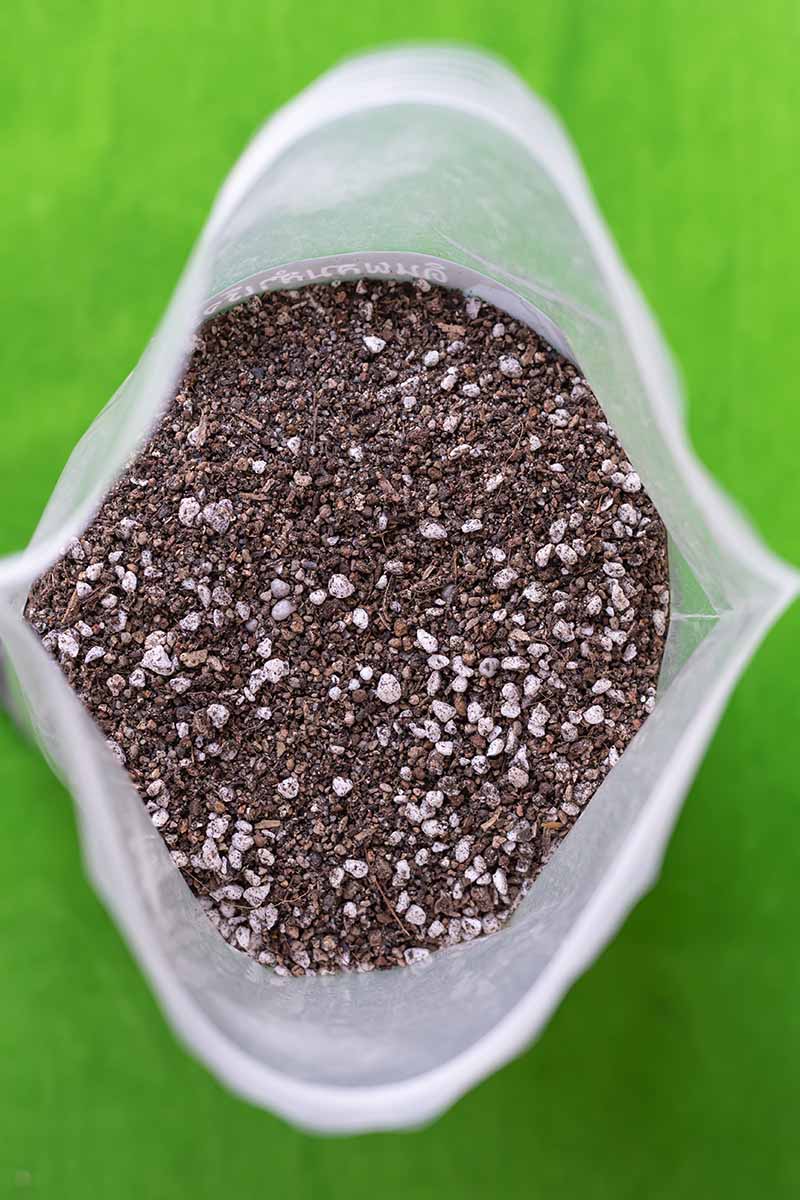
To store, fill a sturdy five-gallon bucket and seal it tightly with an airtight lid. This helps to preserve the quality of the blended mixture.
Remember to keep the bucket in a dry location to prevent moisture from affecting the consistency of the blend.
By having it readily available, you’ll be prepared to repot your cacti, start new projects, or share some with fellow plant enthusiasts.
Mixing It Up
Congratulations! Armed with the knowledge of indoor cactus soil needs, DIY ingredients, and a recipe to create your own mix, you are ready to sculpt the perfect habitat for your prickly companions.

Embrace the journey of nurturing these fascinating desert beauties, and watch them thrive in their carefully crafted homes.
Share tales of your growing adventures, from experimenting with DIY ingredients to finding the ideal balance of aeration and drainage. Or share your favorite commercial soil product. Join us in a conversation in the comments section below.
And for more information about growing cacti, check out these guides next:
